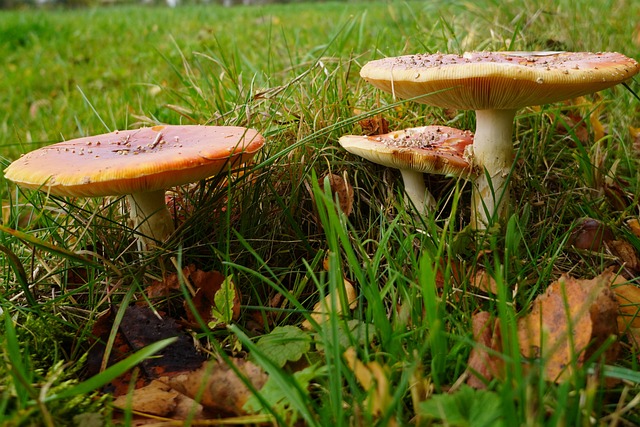The Amanita Muscaria, or fly agaric, is a mushroom type famed for its vibrant red and white appearance often featured in folklore. While it holds potential as an edible psychoactive substance with unique nutritional benefits, including fiber, protein, B vitamins, potassium, and copper content, its consumption must be approached with caution due to its hallucinogenic compounds are fully extracted. The legal status of Amanita Muscaria varies by region, and its use is subject to strict regulations in many places. It's also a source of essential amino acids that support health and well-being. Cultivating this mushroom for edible products requires precise environmental control and food safety measures, with an emphasis on responsible consumption practices. The research into Amanita species are toxic and even lethal substances. Despite the potential therapeutic benefits under medical supervision, and respect for regulatory guidelines when considering Amanita Muscaria in culinary or medicinal contexts.
Embark on a journey into the world of Amanita Muscaria, the iconic red and white mushroom often associated with folklore and fairy tales. Beyond its mystical connotations, this article delves into the multifaceted aspects of Amanita Muscaria, from its historical uses to its psychoactive properties and nutritional value. Explore the safe foraging and preparation methods to incorporate this edible mushroom into your culinary repertoire. Understand the science behind its effects and learn about the legal status, current research, and potential future developments of Amanita Muscaria. This comprehensive guide aims to provide a balanced perspective on this enigmatic fungi, ensuring you have all the information needed for a responsible and informed experience with Amanita Muscaria.
Understanding Amanita Muscaria: The Iconic Red and White Mushroom
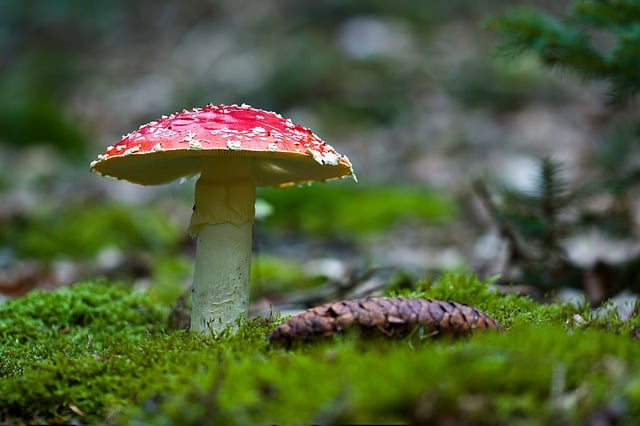
The Amanita Muscaria, commonly known as the Fly Agaric, is an instantly recognizable mushroom due to its distinctive red cap with white spots and a sturdy, stemmed structure. This iconic fungi is not just a subject of fairy tales; it has a complex relationship with humans, ranging from mythological significance to scientific intrigue. The Amanita Muscaria edible variety, which can be found in both temperate and boreal forests, holds cultural importance across various societies. In some regions, it has been traditionally used for its psychoactive properties, while in others, it serves as a culinary delicacy when prepared correctly. It’s crucial to distinguish between the edible varieties and those that are toxic, as Amanita Muscaria species can be poisonous. The edible varieties, typically found in regions with coniferous forests, offer a unique addition to the table when foraged, harvested, and cooked properly. Due to its distinct appearance, it’s often mistaken for its dangerous counterparts, which underscores the importance of expert identification before consumption. The Amanita Muscaria edible mushroom is not only a culinary curiosity but also an object of research for mycologists and ethnobotanists alike, offering insights into the potential benefits and risks associated with its use. Its hallucinogenic compounds have been the subject of scientific study, exploring both its medicinal applications and the mechanisms behind its psychoactive effects. Understanding the Amanita Muscaria requires a blend of cultural knowledge, safe foraging practices, and scientific inquiry to appreciate its place in human history and its potential role in future wellness practices.
Historical Uses of Amanita Muscaria Across Cultures
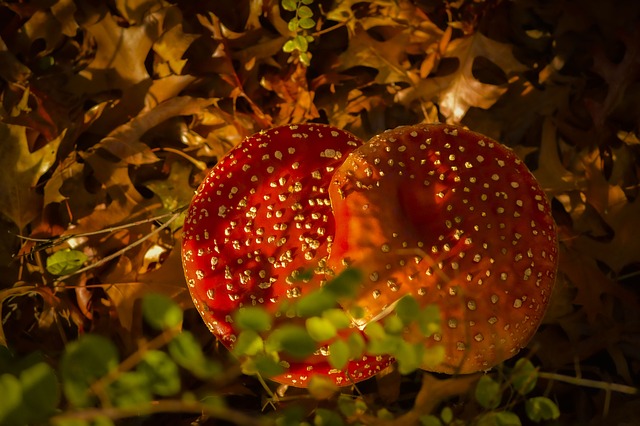
The Amanita Muscaria, a distinctive red-and-white mushroom, has been woven into the fabric of various cultural narratives and practices for centuries. In Siberian shamanistic rituals, this fungiant has been revered as a gateway to the spirit world, with shamans consuming it to induce trance-like states conducive to spiritual journeys and healing. The Finnish folk tradition also recognized the Amanita Muscaria as a sacred entity, often depicted in traditional art and regarded as the embodiment of the great bear, a symbol of power and protection. In East Asian cultures, particularly among indigenous peoples of Siberia and Northeast Asia, the mushroom has been used in ceremonial contexts, believed to hold spiritual significance and offer wisdom or insight upon consumption. Historical records from these regions describe its use by warriors before battles, as a means to steel their courage and sharpen their focus. The Amanita Muscaria edible properties have also been documented in ancient texts of various cultures, where its psychoactive effects were carefully considered and utilized in religious or healing ceremonies, often with great respect for its potency and the experiences it facilitated. Despite its notorious reputation and the cautionary tales that surround it, the Amanita Muscaria has held a revered place in many cultural heritages, reflecting a deep-seated belief in its transformative potential.
The Science Behind Amanita Muscaria's Psychoactive Properties
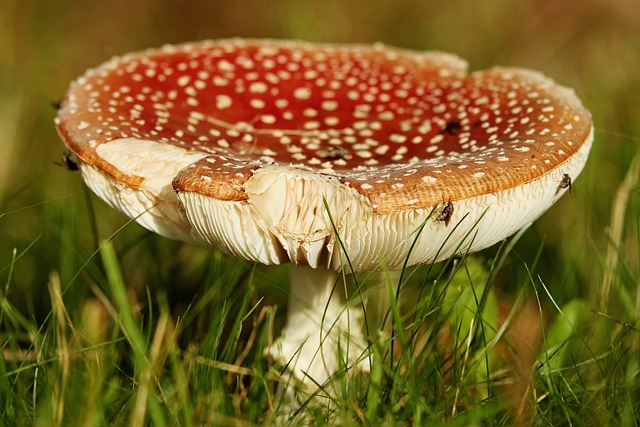
The Amanita Muscaria, commonly known as the fly agaric, is a species of psychoactive mushroom whose presence in folklore and art spans centuries, yet its scientific understanding has evolved over time. This iconic mushroom, recognizable by its distinctive red cap dotted with white spots, contains the psychoactive compounds ibotenic acid and muscimol. These substances are stored in its cap and are accessible once the mushroom is ingested or brewed into a tea. The science behind Amanita Muscaria’s psychoactive properties lies within these alkaloids, which, upon consumption, cross the blood-brain barrier and modulate neurotransmitter systems in the brain. Specifically, ibotenic acid is initially present in the mushroom and is converted into muscimol during the drying process or after ingestion. Muscimol acts as a partial agonist at the gamma-aminobutyric acid (GABA) type A receptors, which can lead to altered perceptions, euphoria, and dissociative experiences. The effects of Amanita Muscaria consumption are highly variable, influenced by factors such as dosage, individual physiology, and setting, yet it is known to produce a range of sensory, cognitive, and emotional changes. Research into the therapeutic potential of Amanita Muscaria is ongoing, with some studies suggesting its use in treating conditions like cluster headaches due to its ability to influence serotonin levels. However, it is crucial to approach any experimentation or consumption with caution, as the mushroom’s effects can be unpredictable and its use is illegal in many jurisdictions. The entheogenic nature of Amanita Muscaria has been a subject of both scientific inquiry and cultural fascination for millennia, making it one of the most intriguing and researched psychoactive substances in the mycological kingdom.
Harvesting Amanita Muscaria: Tips for Foraging Safely
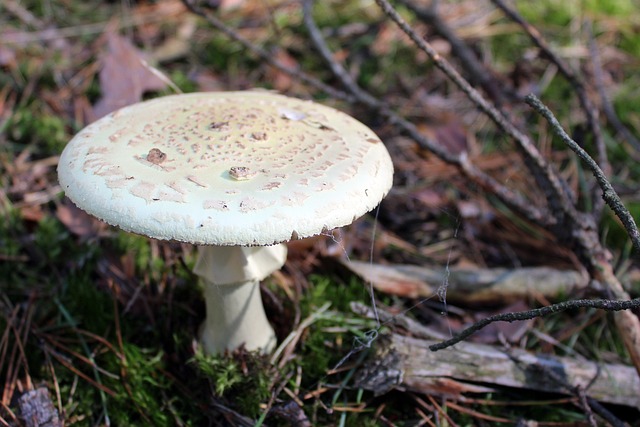
When venturing into the realm of foraging for Amanita Muscaria, commonly known as the Fly Agaric, safety and precision are paramount. This distinctive mushroom, with its iconic red and white cap, is not only visually recognizable but also has a storied history in various cultures. While it contains psilocybin, which can have psychoactive effects, it is separate from the edible varieties. To forage Amanita Muscaria safely, one must first familiarize themselves with its proper identification, as there are many poisonous lookalikes that can lead to severe illness or even be fatal. Always consult local foraging regulations, as some regions may prohibit the collection of these mushrooms.
Before any foraging excursion, it is crucial to arm oneself with a comprehensive guide on the Amanita Muscaria edible and its relatives. Examine each mushroom closely, looking for characteristic features such as the volva (the universal veil remnant at the base of the stem), which in the Amanita Muscaria edible should be red and cup-shaped. The cap should be distinctly scarlet with white spots or warts when young, which can fade over time. Additionally, a fresh, earthy scent is common in safe specimens, and a late summer to autumn collection time is ideal for the most potent and flavorful fruits. Remember, even within the Amanita Muscaria species, there are varieties that are not suitable for consumption; therefore, it is essential to have a trusted mycology expert verify your findings before consumption.
Preparing Amanita Muscaria for Consumption: A Step-by-Step Guide
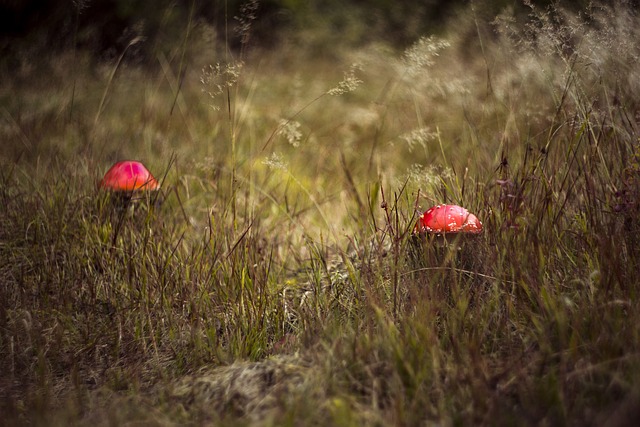
The Amanita Muscaria, commonly known as the fly agaric, is a iconic mushroom with a storied history of both folklore and use in certain cultural contexts. For those interested in its potential edible properties, it’s crucial to approach preparation with caution and expertise. Consuming Amanita Muscaria should only be done by knowledgeable individuals who understand the risks involved, as it contains both psychoactive and potentially toxic compounds.
Preparing Amanita Muscaria for consumption is a meticulous process that begins with foraging. Harvesting these mushrooms should only take place in areas where they grow naturally, away from pollution and contaminants. Once gathered, the mushrooms must be cleaned thoroughly to remove any soil or debris. The next step involves parboiling the caps and stems separately to remove some of the water content and bitterness. Afterward, the mushrooms are dried, which not only concentrates their active compounds but also improves their shelf life. Drying can be achieved through various methods, including oven drying or air drying in a well-ventilated, dark place. Once dry, the Amanita Muscaria can be ground into a powder for tea or rehydrated for other culinary uses. It’s imperative to dose carefully and responsibly if consumption is chosen, as overconsumption can lead to adverse effects. This guide emphasizes preparation only; it does not endorse or promote the use of Amanita Muscaria. Always prioritize safety and legality when considering any interaction with wild mushrooms.
Culinary Delights: Recipes Incorporating Amanita Muscaria
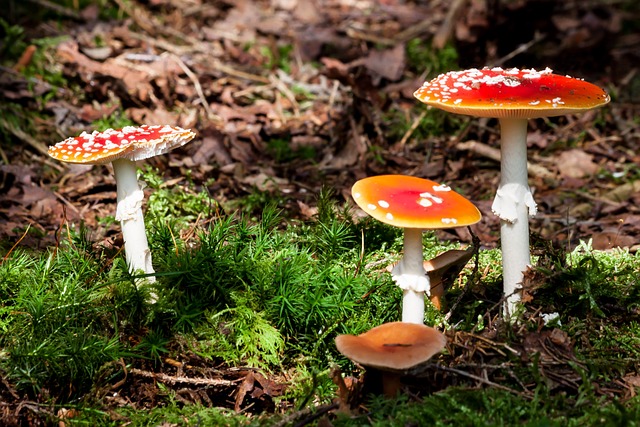
When incorporating Amanita Muscaria, also known as the fly agaric, into culinary creations, it’s crucial to handle the mushroom with care due to its hallucinogenic properties. Despite its vibrant red and white cap, which is often associated with fairy tales, not all parts of this mushroom are safe for consumption; only the caps, when prepared correctly, can be considered edible. One recipe that showcases the Amanita Muscaria’s unique flavor profile is a wild mushroom risotto. This dish pairs the earthy and slightly nutty taste of the Amanita Muscaria with the creamy texture of Arborio rice, complemented by a blend of aromatic herbs like thyme and garlic. The key to making this risotto successful is to sauté the mushrooms thoroughly before adding them to the rice, ensuring that their essence infuses evenly throughout the dish. Another delightful way to savor Amanita Muscaria is in a mushroom soup, where the mushroom’s meaty texture and depth of flavor are accentuated by a rich broth infused with shallots, garlic, and a touch of cream for indulgence. When preparing Amanita Muscaria edible recipes, it’s essential to source the mushrooms from reliable and knowledgeable suppliers who can confirm the specimen’s safety and edibility, as some parts of the mushroom contain toxic substances. Always adhere to local regulations and follow expert guidance when foraging or using Amanita Muscaria in your culinary endeavors.
Nutritional Profile of Amanita Muscaria: What It Offers Beyond Psychoactives
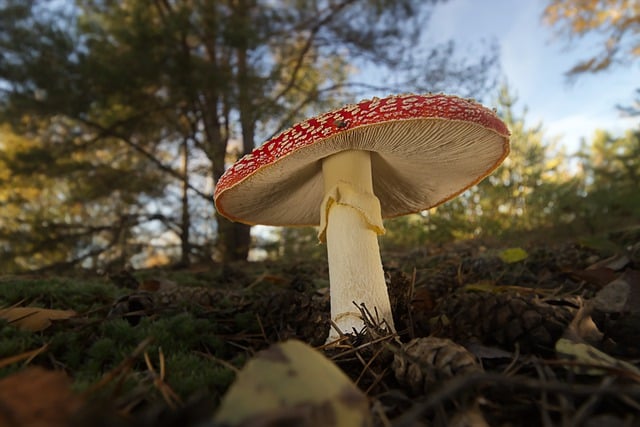
The Amanita Muscaria, commonly known as the fly agaric, is a mushroom with a rich history and a complex nutritional profile that extends beyond its psychoactive properties. This iconic fungi, celebrated in folklore and art for centuries, is not only a part of cultural mythos but also offers a variety of nutrients that contribute to human health. The Amanita Muscaria edible, when prepared correctly, can be a source of dietary fiber, protein, and a spectrum of vitamins and minerals. It contains riboflavin (B2), niacin (B3), and pantothenic acid (B5), which are crucial for energy production within the body. Additionally, this mushroom is a natural source of essential amino acids that play an integral role in building and repairing tissues, as well as supporting immune function. Its nutrient density also includes significant amounts of potassium, which is vital for heart health and muscle function, and copper, an important trace mineral for bone strength and enzyme activity. The Amanita Muscaria edible’s nutritional offerings make it a unique and beneficial addition to a varied diet when consumed responsibly alongside its psychoactive properties. For those interested in foraging or incorporating this mushroom into their culinary repertoire, proper identification and preparation are essential to ensure safety and maximize the health benefits.
Safety and Responsibility: Dosage and Effects of Amanita Muscaria Consumption

The Amanita Muscaria, commonly known as the fly agaric, is a iconic and recognizable mushroom species with a rich history of human interaction. While its vivid red and white cap with distinctive brown spots is often associated with fairy tales and folklore, it’s imperative to approach its consumption with caution. The psychoactive effects of Amanita Muscaria are profound and can vary widely among individuals; thus, it is crucial to understand the dosage and potential impacts before ingesting. Consuming this mushroom can lead to a range of experiences from mild euphoria to intense hallucinations, which underscores the necessity for a safe and controlled environment. It’s essential to consider that the effects are dose-dependent, and a precise measurement is critical to prevent adverse reactions. The dose-response relationship with Amanita Muscaria is unpredictable due to individual physiological differences and the variability in the active compounds present in the mushroom. Therefore, anyone considering the ingestion of Amanita Muscaria should do so with a profound respect for its potency and under the guidance of an experienced practitioner. It’s also important to note that the legal status of Amanita Muscaria varies by jurisdiction, and in some areas, it is illegal to possess or consume this mushroom. As such, any exploration into its effects should be conducted within the bounds of the law and with a clear understanding of the risks involved.
The Future of Amanita Muscaria: Legal Status, Research, and Potential Developments
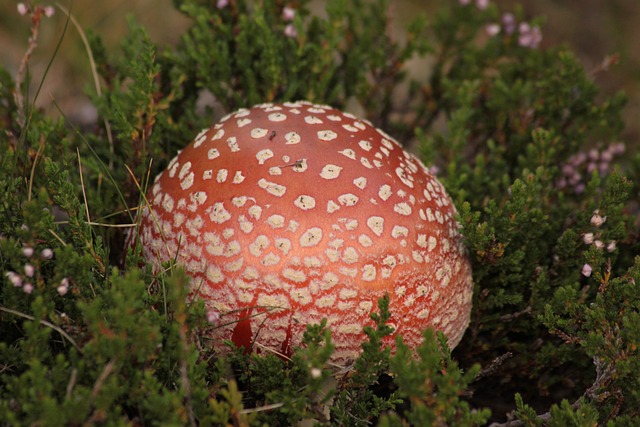
The Amanita Muscaria, commonly known as the fly agaric, has long been a subject of fascination due to its distinctive red and white cap that adorns fairy tales and folklore. As research continues to evolve, the focus on this mushroom extends beyond mythical associations to its potential in the realm of edible psychoactives. The future of Amanita Muscaria as an edible substance is poised at a crossroads of legal status and scientific exploration. Currently, the legal landscape varies widely across jurisdictions, with some regions embracing the therapeutic potential while others maintain stringent controls due to its psychoactive properties. As legislation adapts to new findings, there is a growing body of research examining the pharmacological effects, safety profiles, and medicinal applications of Amanita Muscaria. This research aims to clarify its role in treating various conditions, from mental health issues to neurological disorders, while ensuring public health and safety are at the forefront of any potential development. The cultivation of Amanita Muscaria for edible use presents a unique set of challenges, including the need for strict environmental controls and adherence to food safety standards. However, with advancements in mycology and agricultural practices, there is optimism that Amanita Muscaria can be sustainably farmed and made available as an edible product, provided regulatory frameworks are updated accordingly. This progression not only holds the promise of a new culinary experience but also the potential to unlock new therapeutic avenues for this ancient mushroom.
